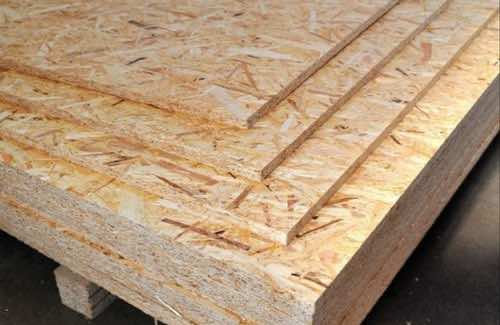Most people have used OSB in their renovation and DIY projects, but do they really know what OSB is, and how it is made?
From the forests to walls or floors, we look at the process of making OSB in four key steps. But before that, let’s understand what OSB is.
What is OSB Board?
First off, the initials OSB stands for Oriented Strand Board. It is a sheet material manufactured by compressing wood layers with adhesives (synthetic resin and wax).
This construction material has existed since 1963, and as opposed to its counterparts, the strands of wood in each layer are fixed strategically instead of randomly to make the board strong, and the sheet can contain up to fifty layers in total!
Let’s see how is OSB board made.
How Is OSB Made
Harvesting the wood
One of the advantages of OSB is that it utilises small-diameter logs obtained from fast-growing tree species such as poplar, southern yellow pine, and black popular. Once the logs are collected and delivered to the site, they are stacked. However, if harvested during the winter, the logs are placed in large heated ponds. The ponds unfreeze and make the logs soft.
Breaking down the logs
At this stage, the logs are debarked. The bark is normally reused as fuel. Now, the log is sliced and diced into stands (usually 3-6 inches long, 0.03 inch thick, and 1 inch wide). Every strand of wood is used here. The sliced strands are then screened to remove infected parts, which are put into wet fuel bins for reuse.
Strand together under pressure
The strands are tumbled through a dryer with temperatures ranging from 1500F at the inlet to 200F at the outlet. They are then compacted with a mixture of waxes and resins.
The next step involves layering the strands into 3-8 inches deep mats on a belt measuring 8-12 feet in width. The lengths of the mats are chopped to fit the plant’s presses. There are environmental controls that clean exhaust air. Extreme heat, electrostatic precipitators, and beds of channel filter VOCs and ash before discharge.
Pressing is the next crucial stage. Here, the mats are baked with temperatures over 400F and under high pressure (varies with board thickness), but on average, it is 1300psi.
Cooling, cutting, and delivering the OSB board.
After coming out of the presses, the OSB sheets are cut into sizes. Normally, the boards are sized into 4 feet by 8 feet. The cut remains are reused as fuel. Some modifications might be made on the boards, such as tongue and groove or radiant barrier. The boards are then inspected and bundled for delivery.
Conclusion
The process of OSB how it’s made is simple but a procedure that needs a lot of precision, especially in the cutting and compressing of the boards. Passed through extreme temperature and pressure and bonded with resins and waxes, the OSB board gets its strength and durability, making it ideal for use in most applications.

